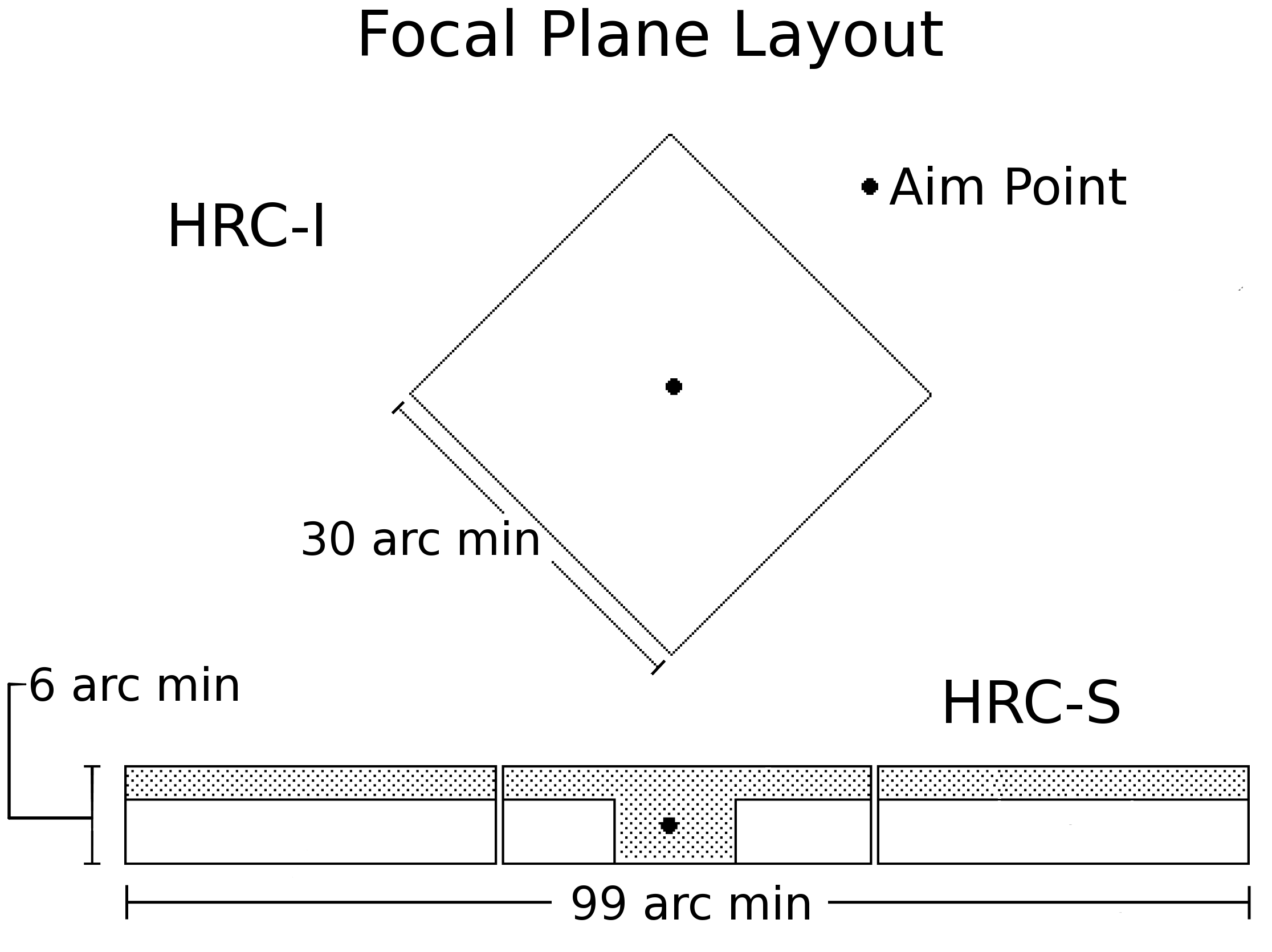The High Resolution Camera (HRC) is a microchannel plate (MCP) instrument with two detectors, the HRC-I optimized for imaging and the HRC-S for spectroscopy. The HRC-I has the largest field of view aboard Chandra. The HRC energy range (0.06-10 keV) extends below that of ACIS, (0.08-10 keV) but with less intrinsic spectral resolution (ΔE/E~1). The HRC-S is well-suited to serve as the readout for the Low Energy Transmission Grating (LETG). It can also be used in a very fast timing mode.
The instrument layout is shown to the right. At 30x30 arc min, the HRC-I FOV is the largest aboard Chandra, larger than the ACIS wide field imaging FOV of 16.9x16.9 arc min. The HRC-I aim point is situated in the middle of the detector for the best image quality. The HRC-S FOV is 6x99 arc min and the aim point is slightly offset to accomodate different wavelengths of the grating dispersed spectrum. For high-precision timing observations, only the center MCP segment is used to generate triggers, lowering the effective area to 6x30 arc min.
A complete description of HRC is given in the Proposers' Observatory Guide.
The table below summarizes the three most common HRC operating modes.
| Common HRC Configurations | |||||
|---|---|---|---|---|---|
| Science Mode | Detector | FOV (arcmin) | Energy Resolution | Time Resolution | |
| High-Resolution and Wide-Area Imaging | HRC-I | 30x30 | ΔE/E=1 over energy range 0.08-10.0 keV | ||
| High-Resolution Spectroscopy with Wide Wavelength Coverage | HRC-S/LETG | 3.4x991 | see LETG | 10 ms | |
| Timing Mode | HRC-S | 6x30 | 16 µs | ||
| Notes:1. Due to the high background exceeding the telemetry limit, a spectroscopy region has been defined by implementing an edge blanking feature. | |||||




